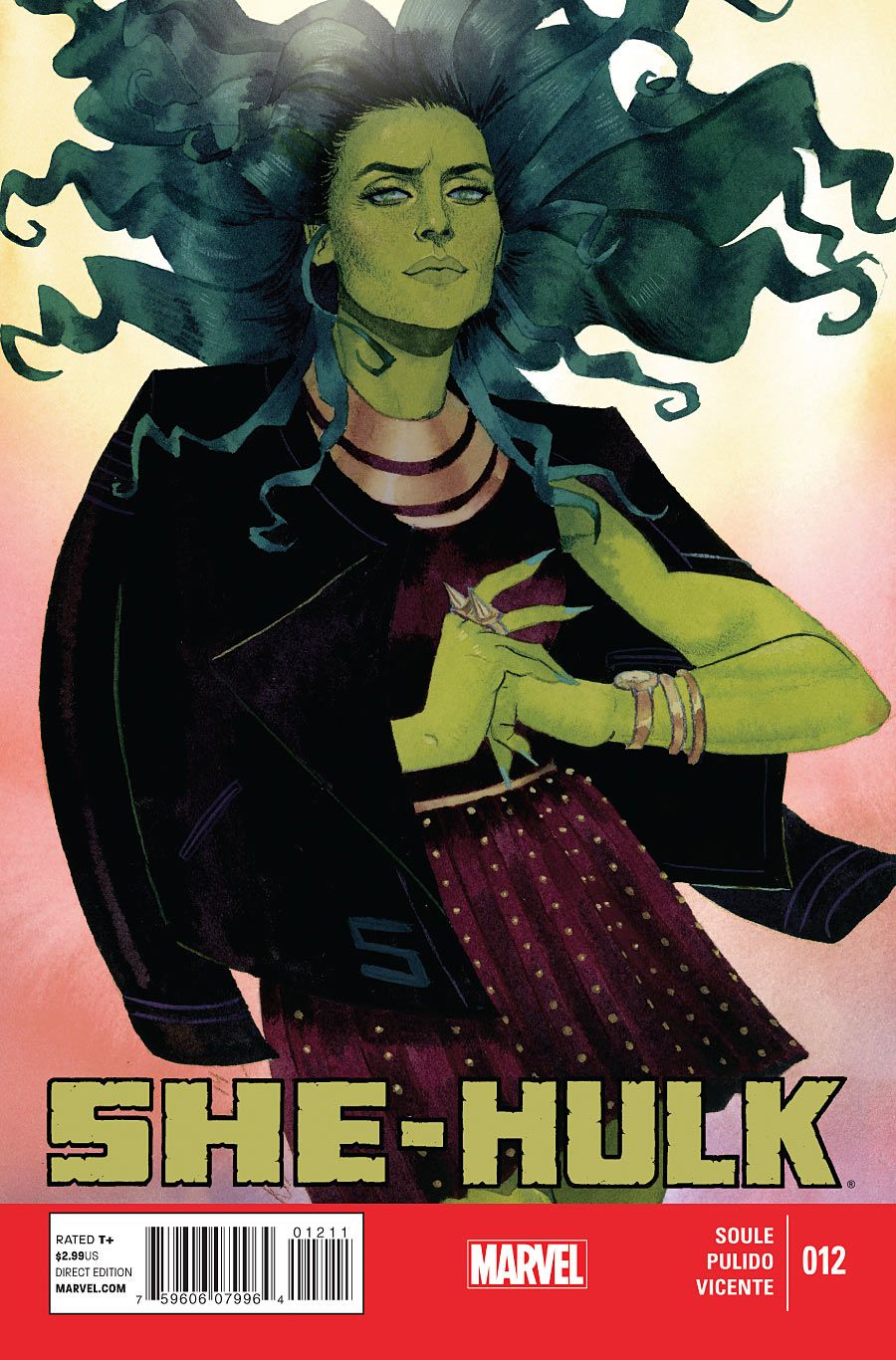"She-Hulk" #12 is the final issue of Charles Soule, Javier Pulido and Muntsa Vicente's critically acclaimed run, and it's also the conclusion to the long-running Blue File plotline, which has been building in significance ever since the fourth issue.
The Blue File has violently thrown off many attempts to unravel its contents, leaving a trail of bodies and hijacked memories and minds. Its existence has created some of the creepiest moments in "She-Hulk." It's almost inevitable that, when the Blue File is finally pinned down, it deflates in stature. On top of that, "She-Hulk" #12 has a lot of final-issue expectations to fulfill. The mechanics of how Nightwatch did it all are maddeningly simple. While this satisfies the formal requirements, tying up almost all the loose ends of the plot, it falls on the anticlimactic side. Given more time and space, Soule probably wouldn't have had to rush so much to produce a tidy wrap-up, but readers have to take "She-Hulk" #12 as it is.
While the mechanics are a bit of a let-down, Nightwatch's motivation is a surprise. Boiled down, Nightwatch is a con man. He stole a job with falsified credentials and then hurt people to avoid detection. This is classic aspirational imposter stuff but with the twist of magical powers. Unfortunately, Nightwatch does a lot of telling instead of showing in his villain's monologue, which diminishes the dramatic effect. This approach also emphasizes the retcon aspect over Soule's originality of design for the crime and the motive.
Angie and Hei Hei's origins and powers remain a mystery even beyond the final page of "She-Hulk" #12. If Jen, as Angie's employer, doesn't know what the duo is capable of, neither does Nightwatch, of course. It makes sense, even if it's convenient for the plot. When Angie seriously considers leaving Jen's practice, saying that "there are other people who could use our help," she's like the Mary Poppins of paralegals. Soule's done a subtle, fantastic job with Angie and Hei Hei's creation by slowly fleshing them out in the background, letting time and familiarity naturally build the reader's trust and affection.
Pulido's art keeps all the action clear, and all his panel compositions with Nightwatch's trench coat tendrils are graceful. There's also fun moments with the gutters; when She-Hulk whisks George Saywitz off, the moment of reality-changing is given due weight with the fractured panel shapes and ink-like linework, as if the shadows were turning liquid from the blast of light. Unfortunately, the current day confrontation doesn't get as much attention to background details, but the two-page spread of She-Hulk rushing Nightwatch is fun. I also have nothing but praise for how Pulido devotes as much as attention to the courtroom and to the team's civilian outfits as he does to the superhero-ing sequences.
I've loved Vicente's color work in "She-Hulk." Her work is daring, exciting and beautiful. She never reaches for the safe choice. No other colorist has made She-Hulk's skintone and clothing look so good. The contrast between the shocking coral pink sky of Nightwatch's spell and the pale emerald green upon its success is a spectacular reinforcement of the before/after of the reality-altering event.
She-Hulk and Hellcat don't make a particularly great showing in the big battle scene with Nightwatch, which is an unusual choice for a feel-good finale, but -- at the end of the day -- it's still Jen's show and a victory for one of her crew is a victory for the team. Soule would have it that the show goes on, even if no one is watching, and this makes for a happy but bittersweet ending for readers who've gotten attached to Jen's scrappy legal practice.
The moral of the Blue File case is "don't fake it to make it." Heroes earn their name, work hard and don't kill people. Saccharine, but not bad words to live by, like most classic morals. Soule and Pulido's "She-Hulk" has been all about meaningful work, whether it's in the courtroom or in hand-to-hand combat. The final scene is wonderful for its hyperactive humor, including a bizarre but very funny cameo appearance by Howard the Duck and for the goodbye shot of the team looking out to the Brooklyn Bridge and to the future. Soule, Pulido and Vicente's "She-Hulk" will be remembered and missed.

